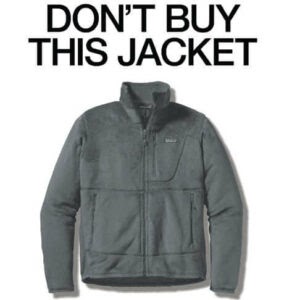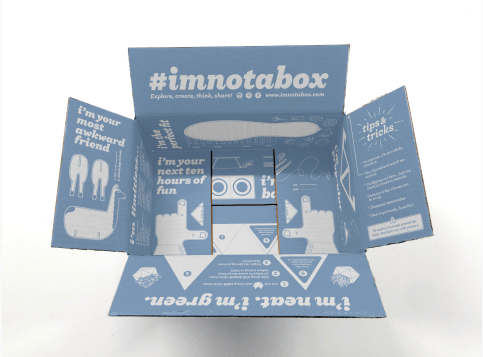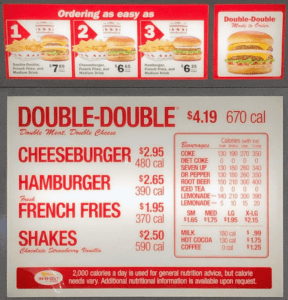What is Reverse Positioning in Marketing? [With Examples]
Reverse positioning campaigns focus on promoting a brand image, resulting in increased customer loyalty and brand recognition. Learn from brands such as Patagonia, Dove, and Zappos, who have successfully been able to execute reverse positioning campaigns and increase sales.
Updated on December 23, 2021
What Is Reverse Positioning?
Reverse positioning is an innovative marketing strategy that focuses on building a brand image around customer relationships.
Also known as reverse marketing, this marketing strategy effectively flips the script of traditional marketing on its head; rather than promoting specific products to customers, reverse positioning simply encourages consumers to seek out a company when they need it.
This marketing strategy is all about drawing customers to the brand so they become more interested and appreciative of what the company offers.
By emphasizing how their business provides value to customers, companies are able to foster brand awareness and customer loyalty.
Key elements of reverse positioning include:
- Establishing an emotional and value-based connection with customers
- Building campaigns based on a policy of honesty and openness
- Allowing customers to come to you, rather than calling them to action directly
- Evaluating and analyzing the needs and identities of your audience
- Focusing on building awareness and appreciation, rather than instant sales
4 Reverse Positioning Benefits
There are 4 core benefits of reverse positioning as a marketing tool:
- Build long-term success
- Cultivate lasting customer loyalty
- Stand out from competitors
- Attract social media attention
1. Build Long-Term Success
While traditional marketing methods focus on instant sales and clicks, reverse positioning is more about building brand awareness that can last for years. These strategies help people recognize and recall a business, so when they’re finally ready to make a purchase, they’re already familiar and comfortable with the brand.
This is particularly powerful for businesses with a long sales cycle, such as companies in the B2B or automotive industries. By focusing on how their products help customers, they stay top-of-mind until customers are ready to buy.
2. Cultivate Lasting Brand Loyalty
By developing the brand's image and personifying values like trust, integrity, and honesty, companies are able to cultivate brand loyalty among their customers. Rather than making a single purchase, customers are more likely to become repeat buyers.
On top of that, loyal customers become brand ambassadors. Through word-of-mouth, companies earn more recommendations, referrals, and sales over time.
This can have a huge impact on a company’s bottom line; in fact, a 5% increase in customer retention can lead to a 25% increase in profits.
Reverse positioning is particularly effective at building brand loyalty because it focuses how the business operates as a whole. Compared to a traditional sales-oriented approach, reverse positioning relies more on company values to promote their business.
Studies have shown that consumers are 4–6 times more likely to purchase or protect products from companies that are purpose- or mission-driven. Consequently, companies can increase sales by focusing on their core values in reverse positioning campaigns.
Read, 40 Amazing Customer Loyalty Statistics
3. Stand Out From Competitors
Reverse positioning also helps brands stand out in their industry. Reverse positioning campaigns provide an opportunity to show the world what makes their business unique. This also gives customers more power over how they engage with different brands.
4. Social Media Attention
Modern marketing is fueled by the power and potential of social media. If you can generate marketing hype about your company on platforms like Twitter and Instagram, you can enjoy a lot of success. Reverse positioning marketing is a great way to build social media buzz.
4 Examples of Reverse Positioning
To get a clearer picture of what reverse positioning is and how it works in action, let's take a look at some examples of reverse positioning campaigns as used by some of the most famous and successful brands in the world.
Patagonia
In 2011, the outdoor clothing company Patagonia launched a successful reverse positioning campaign with eye-catching ads and messages like "Don't Buy This Jacket.”

While shocking, the campaign aimed to inform customers about the environmental costs of manufacturing and encouraged customers to think more critically about their consumption.
Clothing is responsible for 10% of human-caused greenhouse gas emissions and 20% of global waste water, making the fashion industry one of the biggest contributors to climate change.
At the time of the campaign, Patagonia’s European marketing director explained, “Our customers expect very high quality and that’s why they always come back to us. At the same time we help consumers change their behaviour for the better by encouraging them to make more considered purchases.”
According to a 2021 article published by the Columbia Climate School, the average consumer buys 60% more than they did in 2000 and keeps it half as long. To be more sustainable, people need to be purchasing high-quality materials that last, rather than buying several jackets or one jacket every year because they wear out.
The reverse positioning campaign enhanced Patagonia’s mission statement, which emphasizes the importance of protecting nature, causing no harm, and building the best product. As a result, that campaign also cemented Patagonia’s branding as a company that cares about the natural world.
Dove
In 2004, Dove launched their “Real Beauty" campaign. Rather than focusing on lotions or cosmetics, the campaign celebrated beauty in women of all ages, sizes, and races.
Around the same time, Dove committed to featuring “real women” instead of models and portraying them accurately, without editing. In doing this, Dove aimed to inspire self-confidence and build its brand identity around caring about the well-being of its customers.
In the past, advertisements in the beauty industry focused on how their products could help consumers meet often unattainable beauty standards. However, Dove’s campaign reflected changing ideals and the rising body positivity movement.
As a result, their brand stood out in the market and appealed to customers. More than a decade later, Dove’s campaigns continue to focus on building self-esteem. However, this strategy has become more common in the beauty industry since a 2019 study revealed that people are more likely to make a purchase after seeing a more diverse or inclusive ad.
In-N-Out Burger
In-N-Out Burger went in the complete opposite direction than most big fast-food chains by creating a simple and straight-forward menu; it has no kids’ meals, no salads, and no sides apart from fries. In fact, it has one of the shortest menus in the fast-food industry, helping it stand out in an overcrowded market.
By focusing on just a few items, In-N-Out Burger highlights the quality and the taste of their products.
However, they do have a “secret menu” of special ingredients that customers only learn about via word-of-mouth. This encourages customers to talk about In-N-Out Burger’s products. Because these testimonials come from friends and family, they’re more valuable and trustworthy than advertisements.
As a result, In-N-Out Burger’s customers have become advocates for the brand and often go out of their way to visit their restaurants and try new menu items.
Zappos
Zappos, a shoe retailer, got creative with reverse positioning in its “ImNotABox” campaign. This campaign showed how customers could transform a shoe box into something else.
As part of the campaign, they redesigned their packaging to demonstrate new ways to use their box, encouraging customers to “Explore, create, think, and share!” Some boxes included templates to build a smartphone holder, children’s shoe organizer, a planter, and a 3D Llama.
According to Businesswire, the brand strategy and marketing manager at Zappos, Kelly Smith, explained the campaign, “The Zappos box is our way of being there for our customers, wherever they are in life, as we provide them with the things they need and love. Every box has a unique story and purpose.”

Source: Businesswire
Then Zappos released a 90-second video showing how a young boy used shoe boxes to create a box-home for a homeless man he saw every day.
The video reinforced Zappos' image and drove to help others and do good — not just sell shoes.
According to their website, Zappos strives to be community-focused and do the right thing. This campaign emphasized their brand values and sent the message that Zappos is different from other shoe retailers.
How to Create a Reverse Positioning Marketing Strategy
- Evaluate your target audience to understand their needs, desires, and expectations.
- Align your business’s image with the goals and needs of your ideal audience.
- Commit to brand values and ideas. Let them drive business decisions and marketing strategies.
- Develop a campaign that demonstrates how your company meets customer needs and differs from others in your industry.
Reverse Positioning Is an Effective Marketing Strategy
Reverse positioning allows companies to eschew traditional calls to action and pushy sales messages in favor of innovative campaigns that highlight their brand values and enhance their appeal.
By focusing on how their business provides more value to customers, companies are able to cultivate customer loyalty and stand out from their competitors. Over time, a reverse marketing strategy helps brands stay top-of mind and encourages customers to seek out a brand when they need it.
Need Help Selecting a Digital Marketing Agency?
We’ve created a directory of digital marketing firms to help you compare and connect with the right companies. Use client review ratings, services offered, and client focus to create a shortlist of digital marketing firms. If you want personalized recommendations, share your project details with us.
Additional Reading:
Need help selecting a company?
Based on your budget, timeline, and specifications we can help you build a shortlist of companies that perfectly matches your project needs. Get started by submitting your project details.


